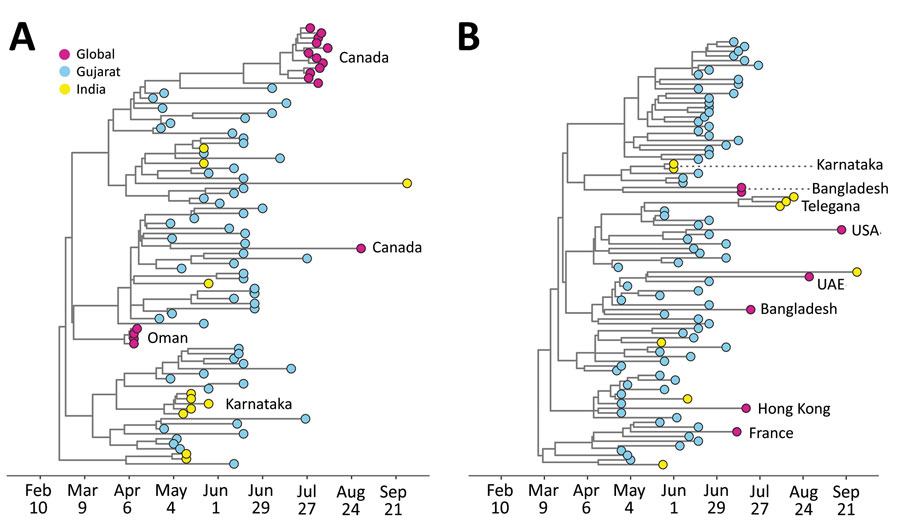Volume 28, Number 4—April 2022
Research
Genomic Epidemiology of Early SARS-CoV-2 Transmission Dynamics, Gujarat, India
Figure 4

Figure 4. Timing of exportation of severe acute respiratory syndrome coronavirus 2 from Gujarat, India. Maximum clade credibility trees are for the 2 largest transmission lineages identified in this study: A) DTA_MCC_4; B) DTA_MCC_5. UAE, United Arab Emirates.
1These senior authors contributed equally to this article.
Page created: February 01, 2022
Page updated: March 19, 2022
Page reviewed: March 19, 2022
The conclusions, findings, and opinions expressed by authors contributing to this journal do not necessarily reflect the official position of the U.S. Department of Health and Human Services, the Public Health Service, the Centers for Disease Control and Prevention, or the authors' affiliated institutions. Use of trade names is for identification only and does not imply endorsement by any of the groups named above.